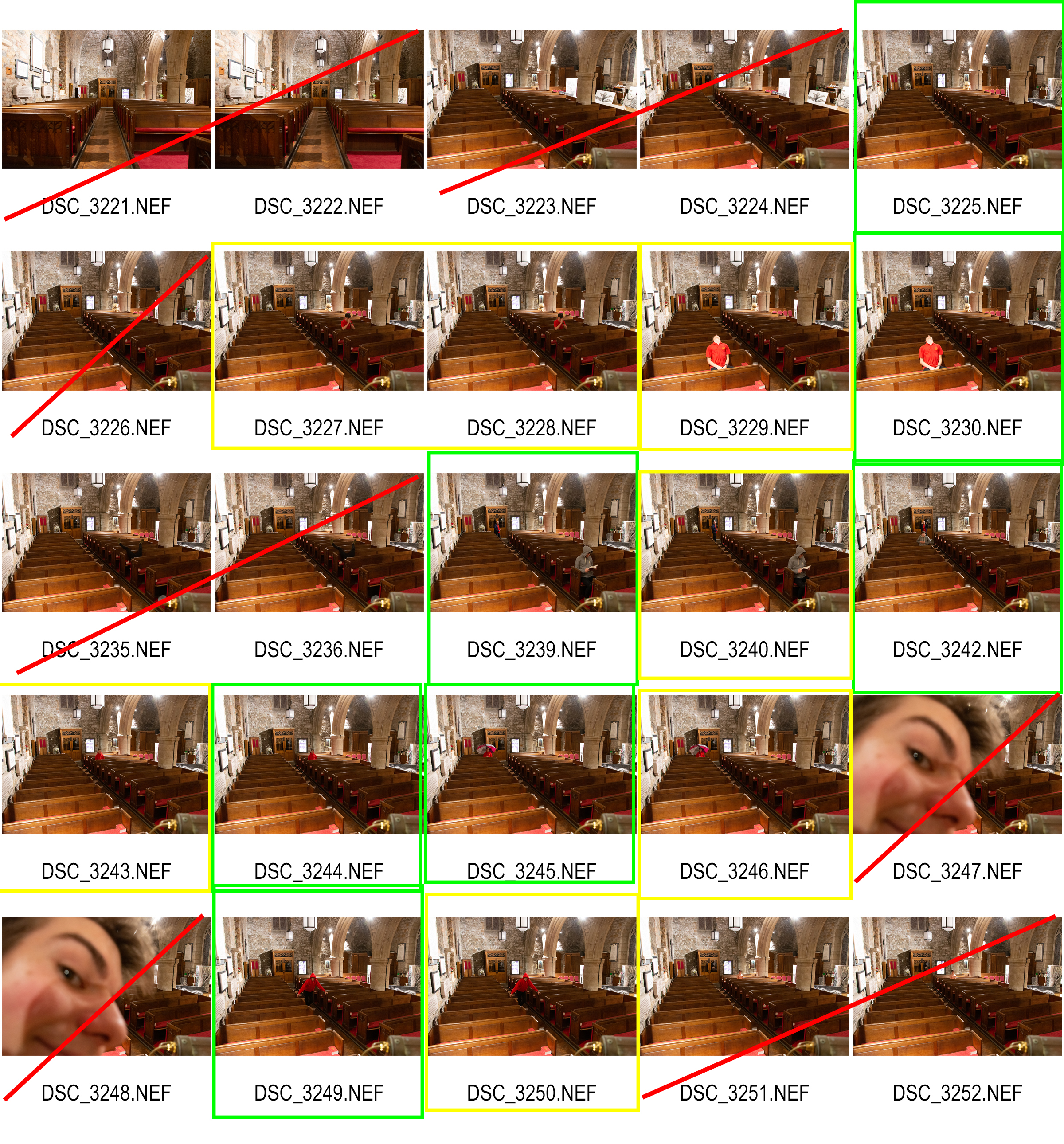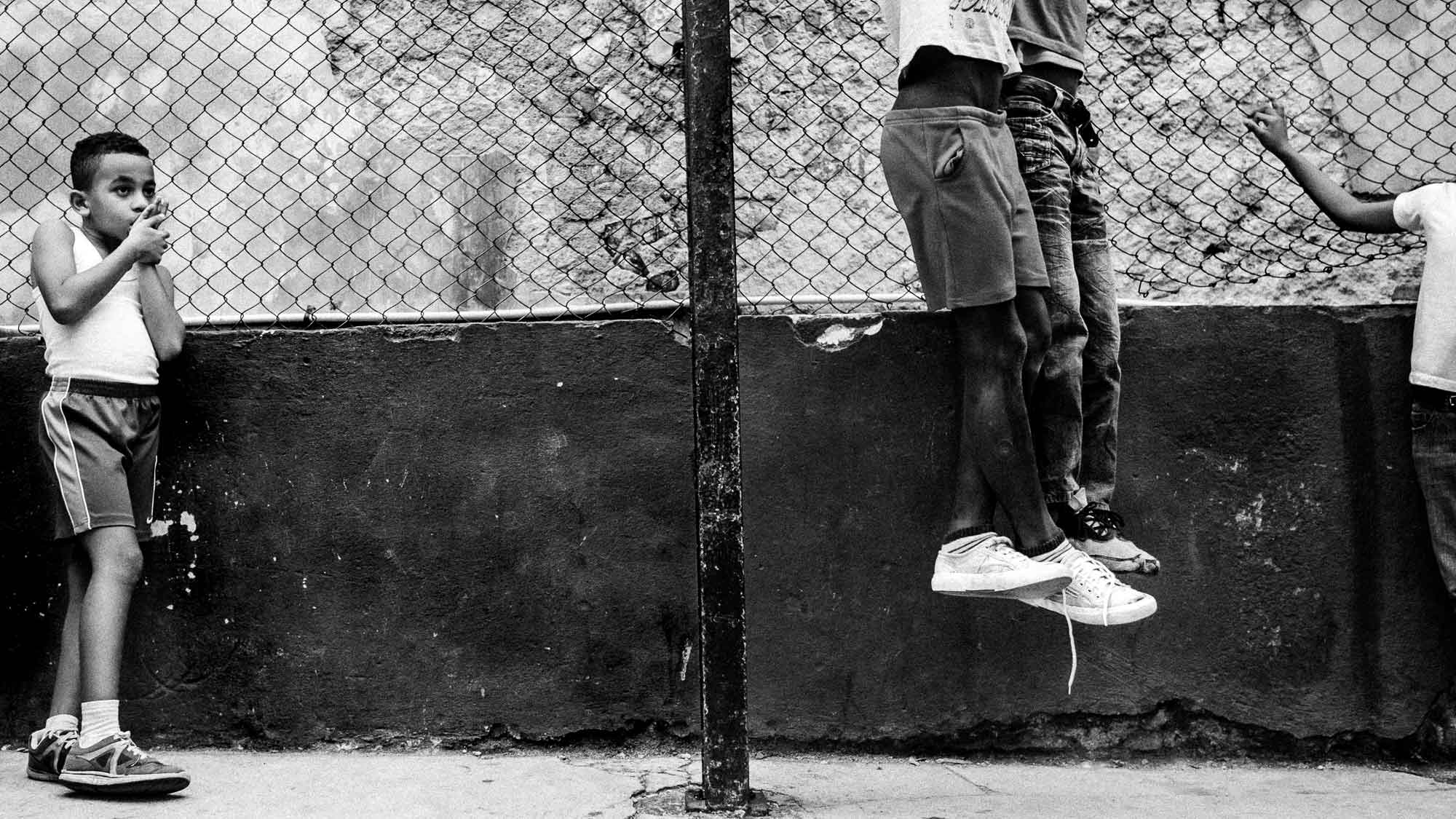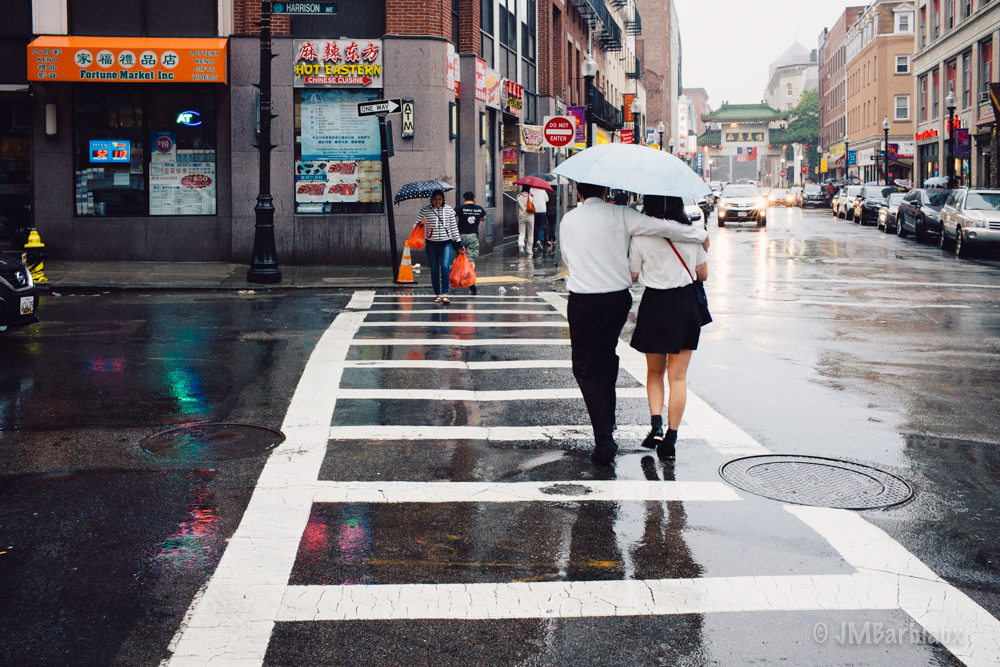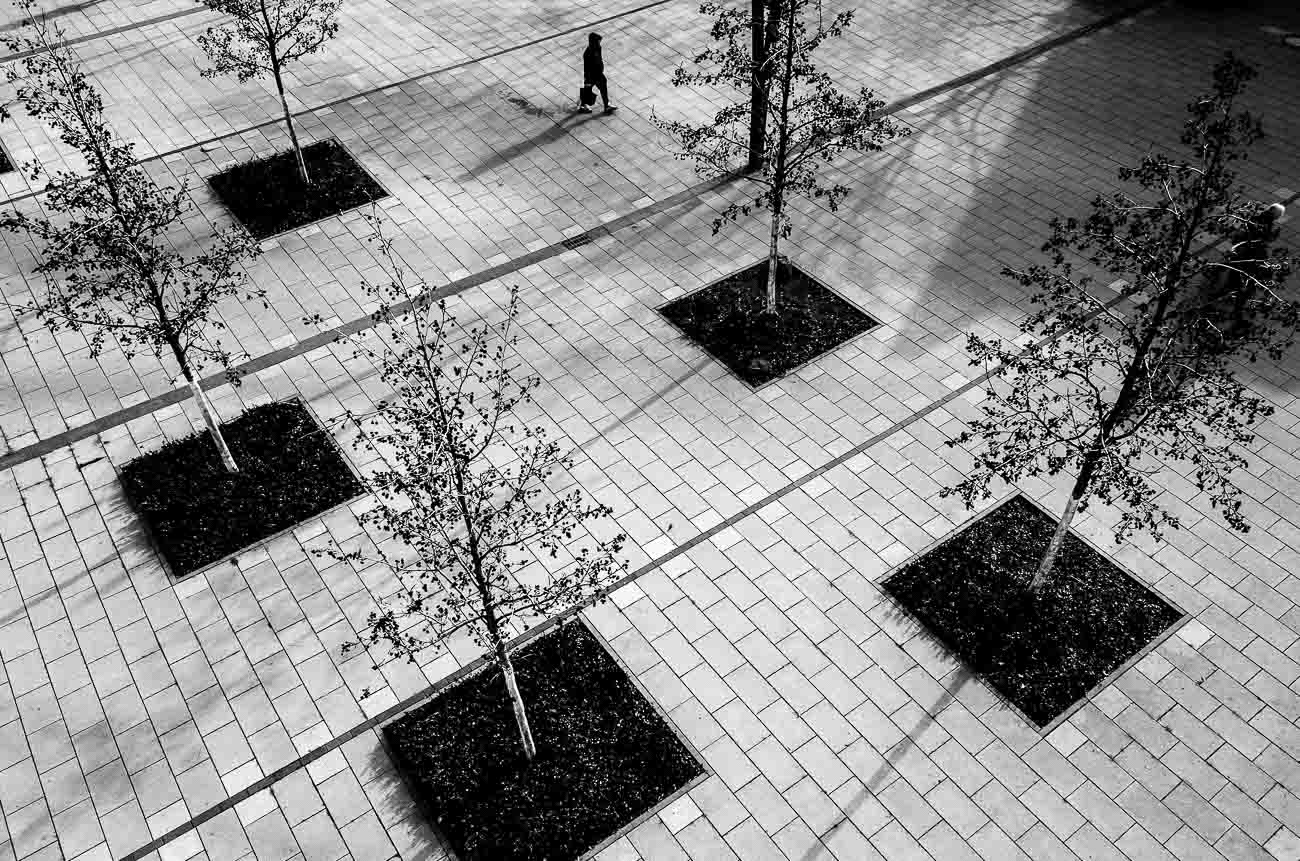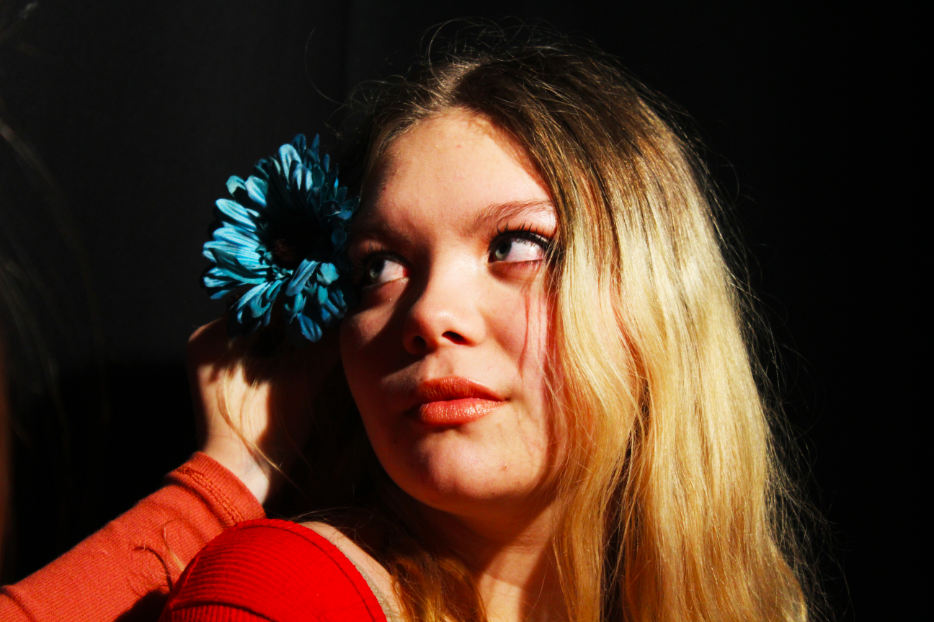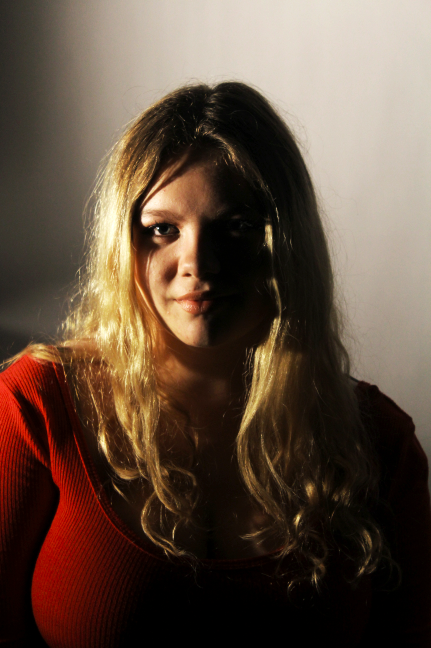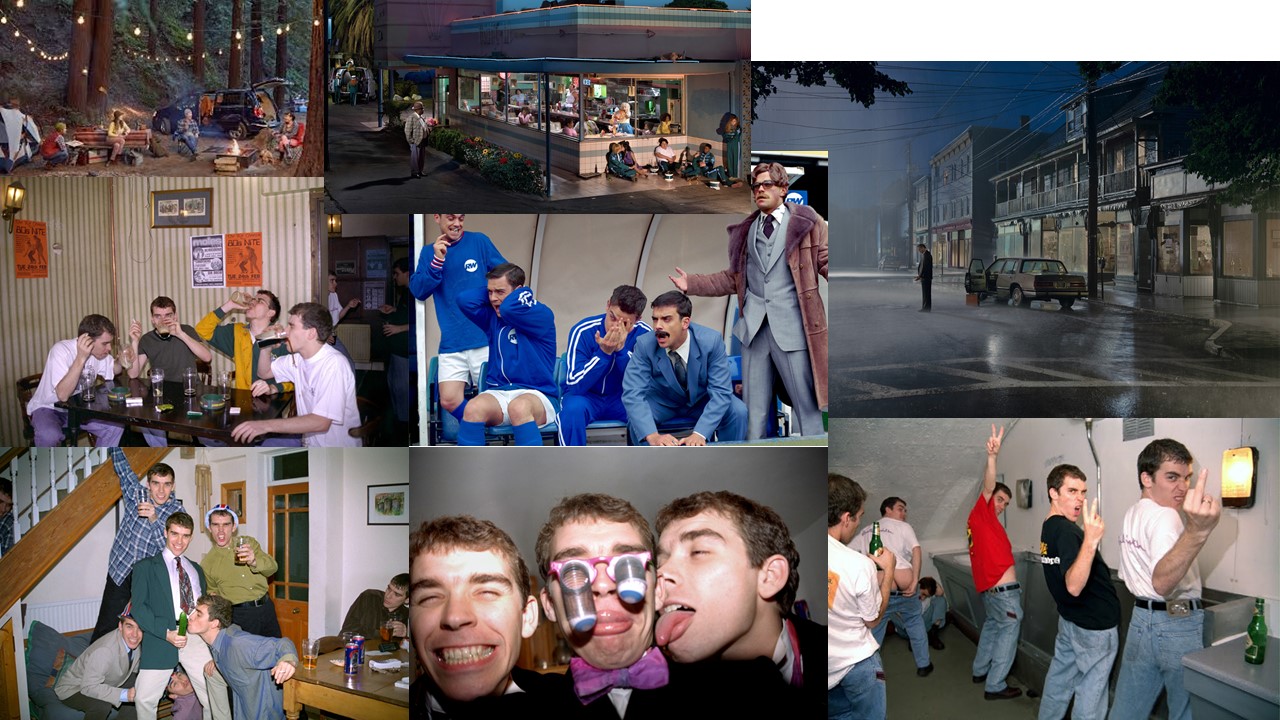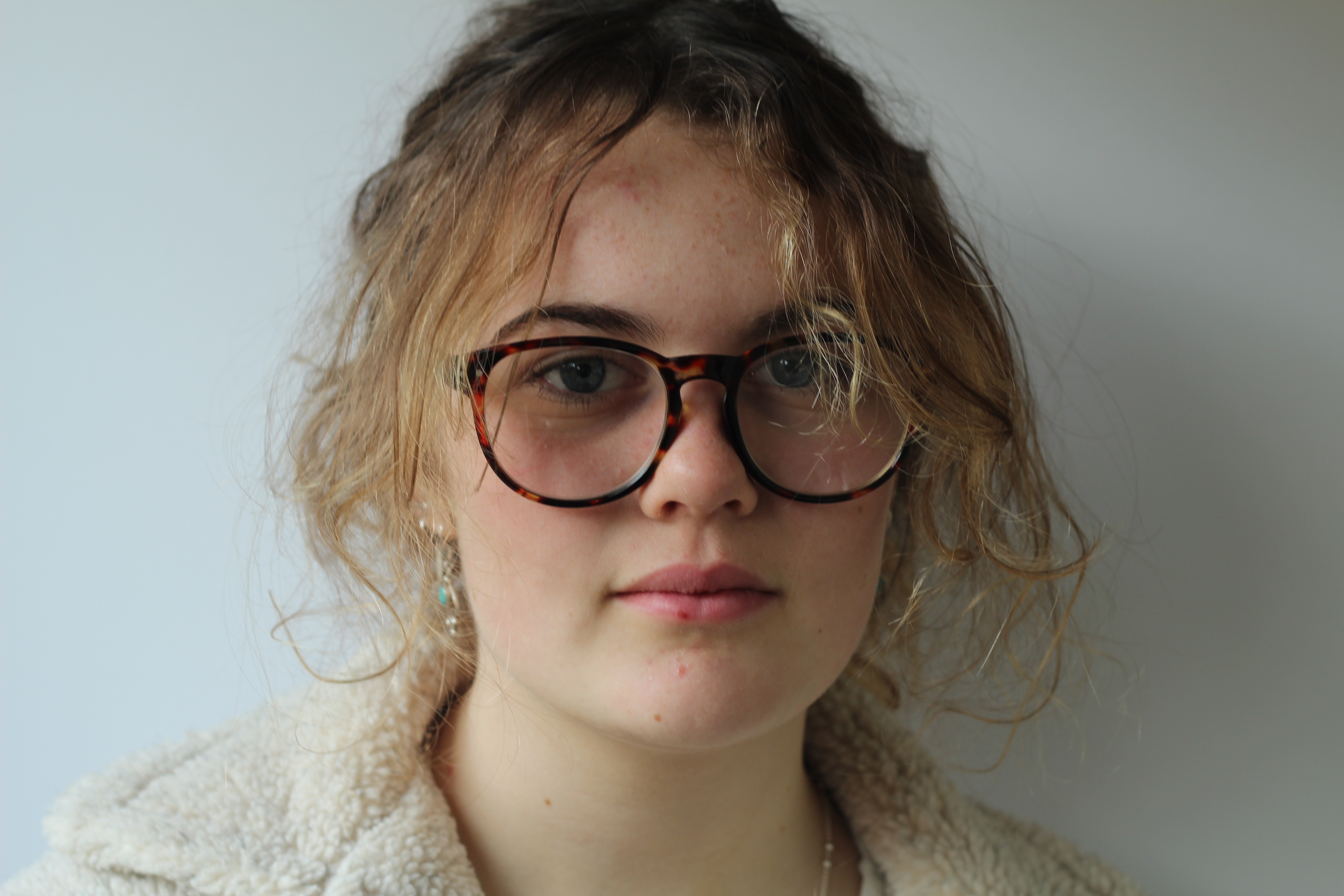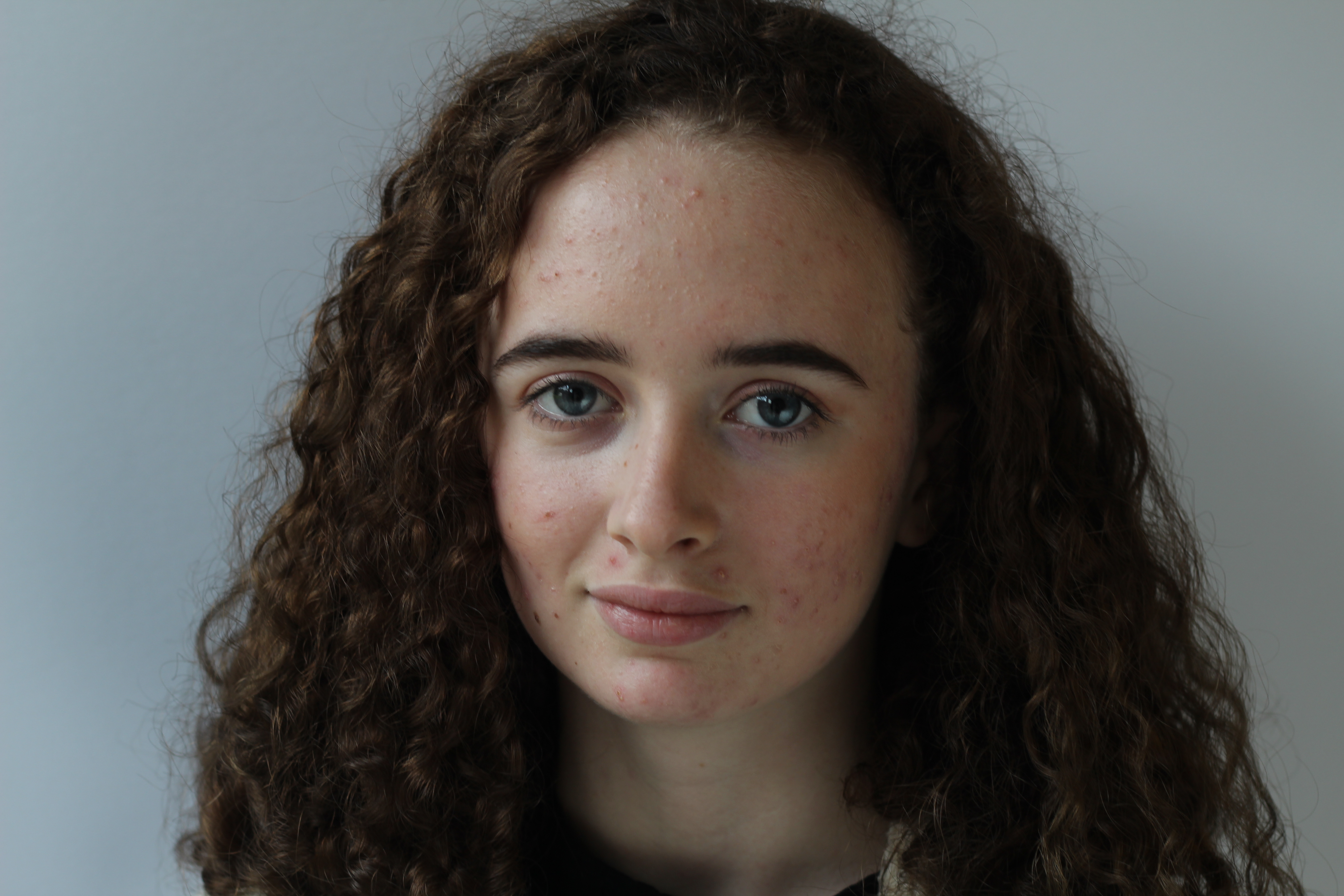When editing the photos I encountered a problem that I have mentioned in an earlier post and that is that because I had no trigger and a tripod not suited to my camera, I had some minor problems with camera shake and movement, I did partly fix it by having the camera on a timer but there was some slight miss-alignment in the editing but I did manage to find a way around it, and still produce the image that I wanted. 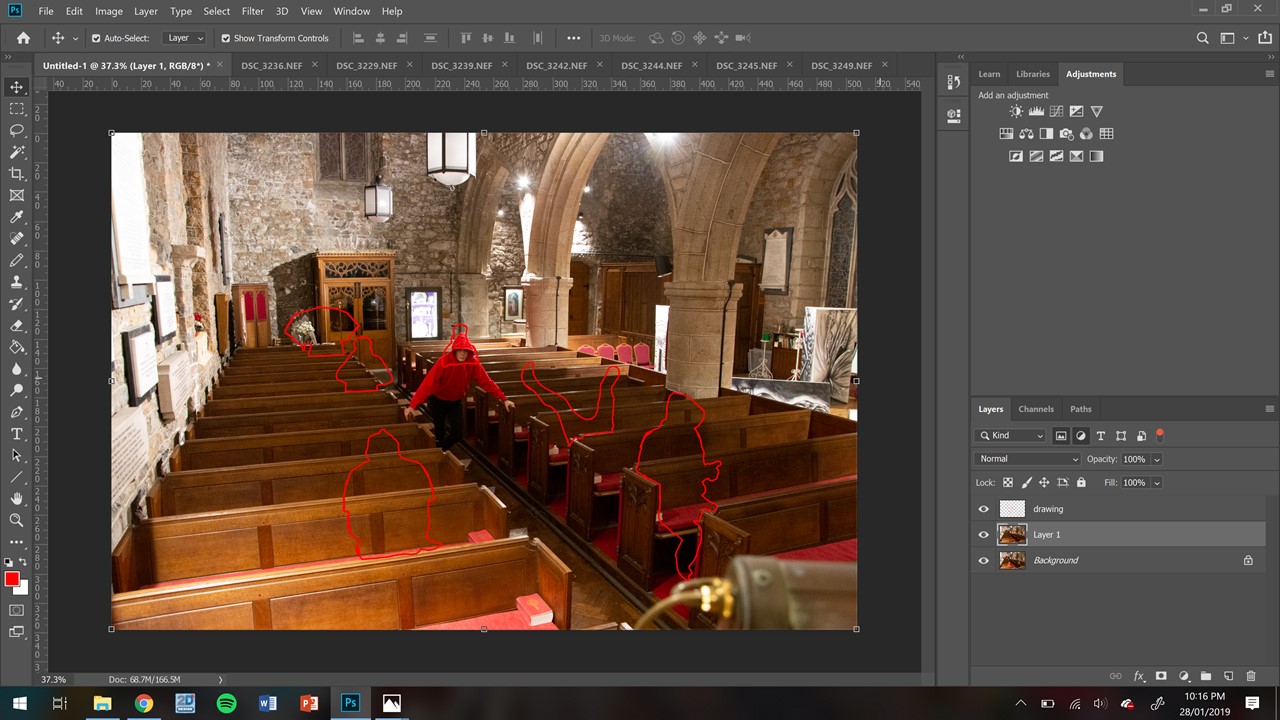
What I tried to do was just to layer each photo on-top of one another and simply rub out the areas where I was in the photo, however, because of the straight lines of the pews and the shake of the camera, that didn’t work, so I decided to add each photo one at a time on top of each other and before I put the next layer on I had a bank layer called “drawing” (seen as the top of the three layers above) and I carefully drew round each of the “me’s” and then rubbed out the filling from the red box each time, and after I did this on a layer I made the drawing layer invisible, by clicking the small eye next to it, and then merged the visible layers and built it up until i had the complete image.
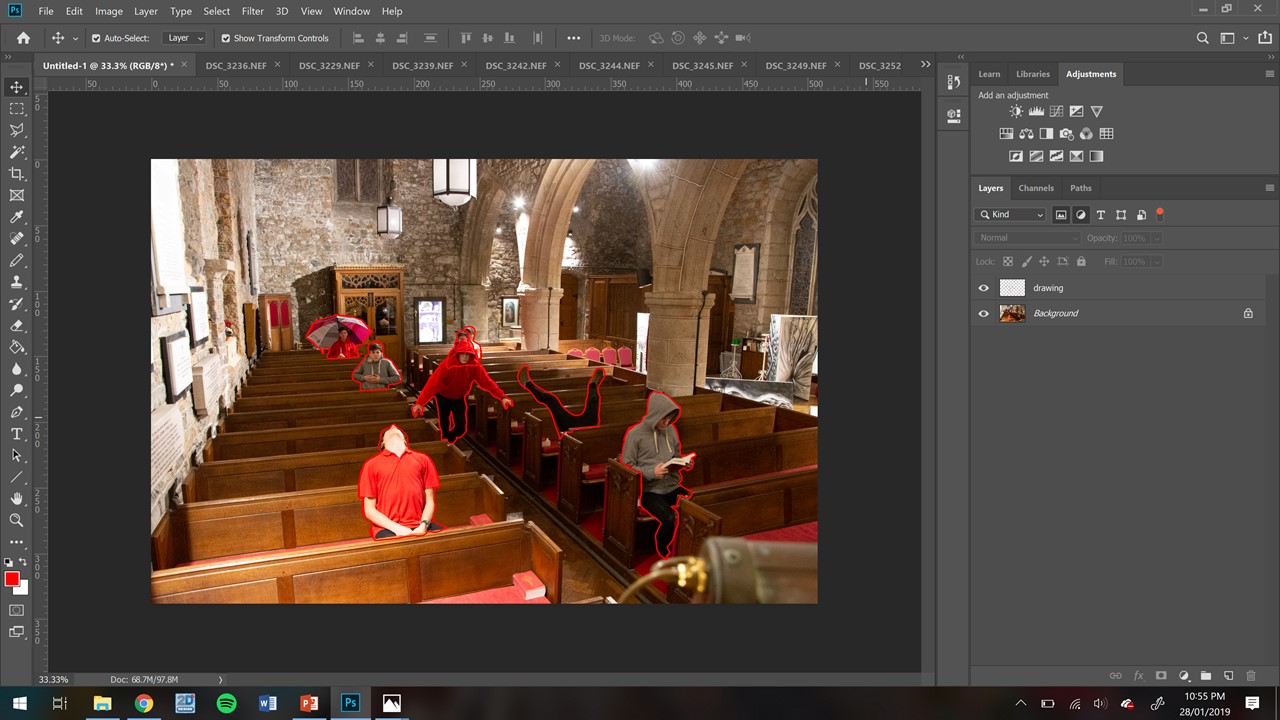
Seen above is the completed image with all outlines.

